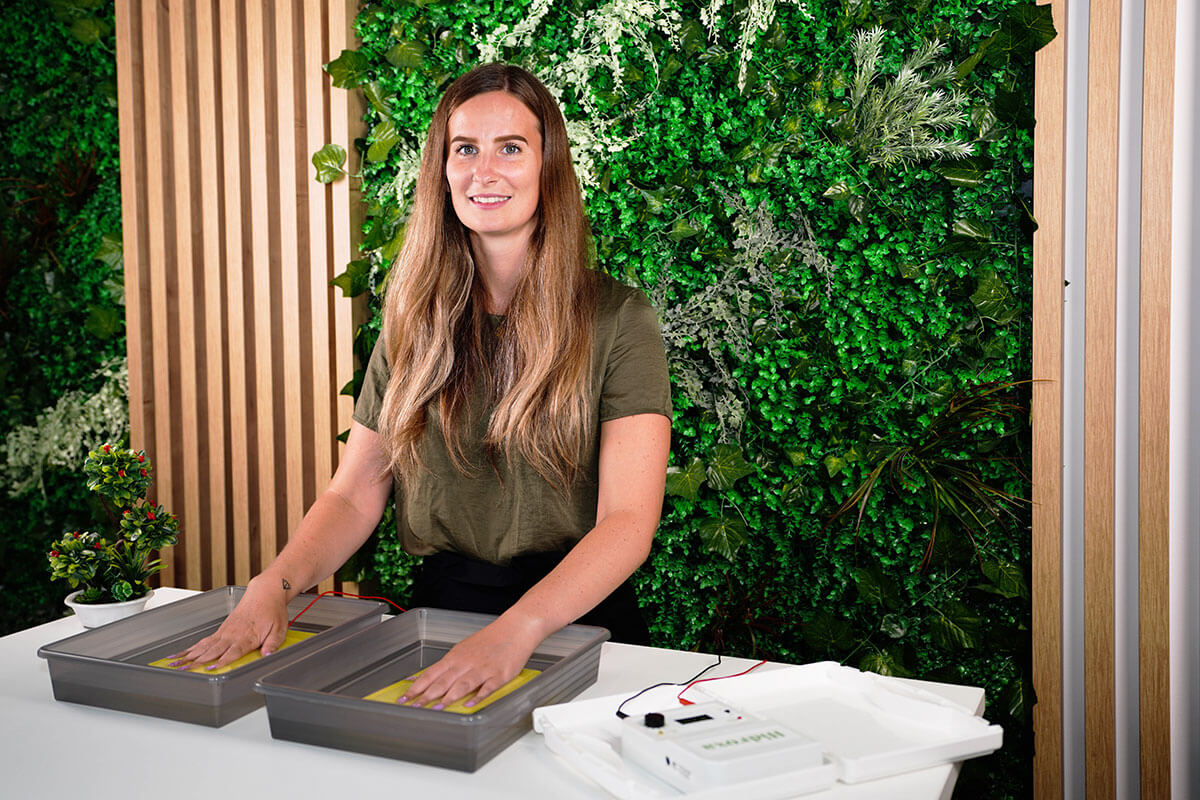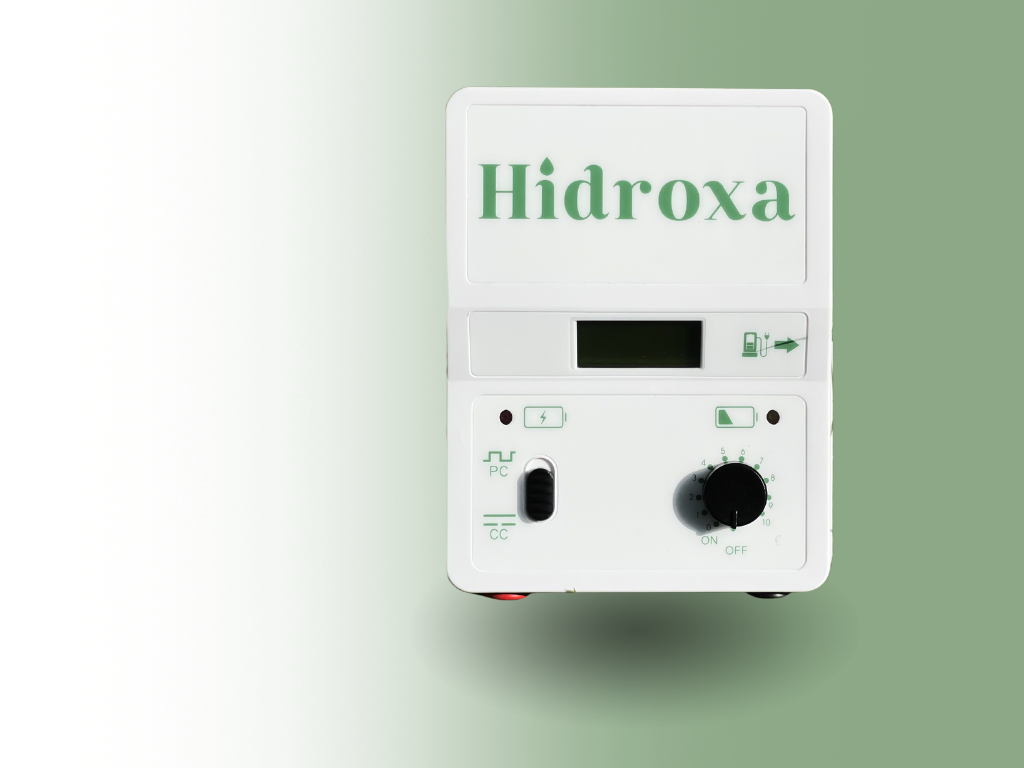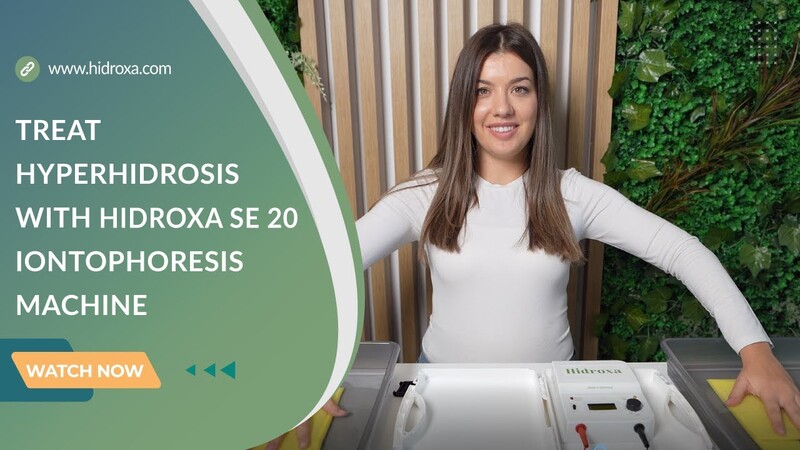Iontophoresis for hyperhidrosis: everything you need to know
Excessive sweating, medically known as hyperhidrosis, can be a challenging condition to manage. If you constantly struggle with sweating that is not related to physical activity and temperature or is simply excessive.
What Is hyperhidrosis?
This form is often inherited, often focal, affecting specific areas like the armpits, palms, feet, face, lower back, and genitals. It is not caused by any underlying conditions or factors. If underlying causes are the reason for the sweating it is called secondary hyperhidrosis. Secondary hyperhidrosis must be excluded before hyperhidrosis is treated to avoid missing treatable or even malignant conditions. Hyperhidrosis goes beyond the usual sweating one might experience during a workout or in warm weather. It's characterized by excessive sweating that can soak through clothing, making everyday activities uncomfortable or even unbearable. Studies show that people with hyperhidrosis have a severe negative impact on their life quality and suffer a lot and struggle to handle their sweating on a daily basis. It is not "just a little sweat".There are two main types of hyperhidrosis:
- Primary hyperhidrosis:This form is often inherited, often focal, affecting specific areas like the armpits, palms, feet, face, lower back, and genitals. It is not caused by any underlying conditions or factors.
- Secondary hyperhidrosis: Caused by underlying medical conditions or medications, this type often leads to widespread sweating across the body.
Understanding iontophoresis
Iontophoresis is a specialized treatment designed to address hyperhidrosis effectively. During an iontophoresis treatment session, the affected body parts, such as the hands, feet, or armpits, are placed in a tray filled with water. The iontophoresis machine is connected to the electrodes which are placed in a tray, and a mild electrical current is delivered through the water. This method works by temporarily disabling the sweat glands, providing relief from excessive sweating.
The duration of the treatment can vary, typically taking between 15 to 40 minutes, depending on the specific machine used.
For optimal results, it's essential to adhere to a consistent treatment schedule, initially requiring sessions three times a week. Once the desired results are achieved, maintenance treatments are recommended, usually at a frequency of once per week.
It's crucial to note that a prescription from a healthcare professional is necessary to acquire a plug-in device for home use. Many insurance plans may cover the cost of this device, making it an accessible option for those in need.
In some cases, adjustments to the settings may be necessary to ensure the effectiveness of iontophoresis. If the water used is too soft, adding a teaspoon of salt or baking soda can enhance the treatment's efficacy. Soft water lacks the minerals and electrolytes required for optimal electrical conductivity. Additionally, you could try with mineral water instead of tap water and not add salt.

Is iontophoresis effective?
Research indicates that iontophoresis is particularly effective in treating focal hyperhidrosis, especially involving the hands and feet. A study conducted in 2017 demonstrated significant improvement in symptoms for the majority of participants within 2 to 4 weeks of treatments done every other day. Maintenance treatments every 3 to 4 weeks helped sustain these positive outcomes.
Although the exact mechanism of action is unknown, the effect is thought to be the result of alteration of the signals from the nerve cells to the sweat glands.
Generally, iontophoresis is a safe procedure, especially when you compare it to other hyperhidrosis treatments, such as anticholinergics or surgery. It’s a painless and effective treatment that can be used to reduce excessive sweating (hyperhidrosis) of the hands, feet, and armpits. This treatment is often recommended to people who have tried prescription antiperspirants but without success and need more effective treatment. Despite the uncertainty regarding its precise workings, iontophoresis has proven to be a highly effective and low-risk treatment option. About 90% of the patients see a significant sweat reduction with iontophoresis.
Tips for getting the most out of iontophoresis
Success with iontophoresis depends on adherence to the treatment regimen and some practical considerations. Here are tips to maximize the effectiveness of iontophoresis:
- Seek professional guidance: Before attempting iontophoresis at home have a health care professional help you with your optimal settings. While it is an easy device to use, many feel safe with a medical professional to turn to for any concerns.
- Expect a tingling sensation: During the treatment, a mild tingling sensation may be felt, which is a normal part of the process. Do not be afraid and let this stop you from treatment.
- Don't be alarmed by the electrical current: While the electrical current may startle you, rest assured that it is not enough to cause harm. Avoid removing your hands or feet from the water during the treatment. Do not be afraid. Most people can increase the current level after a few treatments
- Remove jewelry: Take off any jewellery before starting treatments to ensure safety and optimal contact with the treatment solution.
- Use petroleum jelly for sore spots: Apply petroleum jelly to any sore spots before treatment, but use it sparingly as excessive use can hinder iontophoresis.
- Moisturize after treatment: If the treatments result in dry skin, use a moisturizer to keep your skin hydrated.
- Address irritation with hydrocortisone cream: In case of irritation post-treatment.
- Make sure the water covers the whole treatment area.
- Make sure you use the highest tolerable current level.
- Make sure the water you use contains enough minerals.
Anti sweat machine
Our Hidroxa SE 20 iontophoresis machine is easy to use and clinically tested for treating excessive sweating of palms, feet, face, and armpits.
Iontophoresis is a scientifically proven method that works for approximately 95% of our customers. You can reach its full effect with 12 treatments.

Other treatment options for hyperhidrosis
First things first, it's important to be aware that hyperhidrosis can be triggered by underlying health conditions or medication side effects. If you're experiencing severe sweat problems, you should contact a doctor to examine your case and exclude other diseases. However, if that is not the case, there are treatments that can help
Excessive sweating (hyperhidrosis) can be uncomfortable and at the same time challenging to treat. What works for one person doesn’t mean it will for another, so it can take some time to find the right treatment.
It's usually recommended to start with the least invasive treatment such as antiperspirants. Lifestyle changes may also help, including wearing loose and light clothes or avoiding triggers, such as alcohol and spicy food. If lifestyle changes and antiperspirants don't work, usually the next thing to consider is iontophoresis or Botox.
Discovering an effective treatment to manage excessive sweating can significantly enhance your quality of life. If left untreated, hyperhidrosis may lead to the development of additional skin conditions. Your healthcare provider may recommend other approaches, including:
- Clothing choice: Wearing breathable fabrics can be effective for mild symptoms.
- Antiperspirants: Aluminum-based antiperspirants, including prescription-strength options, can help seal up sweat glands.
- Oral medications: Referred to as anticholinergics, they are widely used as the first-line therapy for axillary hyperhidrosis, (Glycopyrrolate, Oxybutynin, Robinul, etc). Side effects can include dry mouth, constipation, dizziness, dry eyes, loss of taste which can be regulated by adjusting the dose. But also mental side effects can occur.
- Prescription wipes: Like for example Qbrexa which contain anticholinergic substances. These can be an alternative for blocking sweating.
- Antihydral cream is recognized for its sweat-reducing properties attributed to the presence of formaldehyde and glutaraldehyde. This cream releases formaldehyde, contributing to the effective control of excessive sweating and providing users with a reliable solution for managing hyperhidrosis.
- B. toxin injections: Injections have been used for a couple of decades to treat excessive underarm sweating and it can help reduce sweat up to one year depending on the sweating level, the amount injected, and location. Although often more effective and less painful for axillary hyperhidrosis, it can be used to treat almost any body part. While more expensive, Botox injections offer a temporary solution to stop sweat production and may need repeat applications.
- MiraDry: This method aims to permanently destroy overactive sweat glands. A handheld device used for excessive underarm sweating by delivering precisely controlled electromagnetic energy under the skin that destroys the sweat glands through the process of thermolysis. It is said that once treated, these sweat glands do not regenerate, making Miradry a lasting solution to underarm sweating. But this is still to be discussed further. Considered quite invasive and can lead to pain and swelling.
- Surgery: Removal of the sweat glands. Not often performed any longer. In severe cases, surgical options involve the removal of sweat glands or disconnecting nerves causing symptoms. However, surgery carries inherent risks, and some individuals may experience increased sweating in other areas post-surgery.
There is also ETS (endoscopic thoracic sympathectomy) a form of surgery where the lugnds are deflated and nerves are clamped or cut. Usually it’s not recommended due to serious side effects and it’s reserved as a last option for patients who do not respond to other treatments.
Iontophoresis is one of the most effective as well as cost effective and non-invasive treatment option for hyperhidrosis.
What are the pros and cons of iontophoresis?
Pros:
- Non-invasive: Iontophoresis is a non-surgical and non-pharmaceutical treatment option, making it safe and accessible.
- Mild and few adverse effects: Iontophoresis does not involve the use of prescription medicines, minimizing the risk of adverse effects.
- Easy to use: Many patients find iontophoresis machines simple to operate, allowing them to carry out treatments in the comfort of their own homes.
- Long-lasting results: With regular use and maintenance treatments, iontophoresis can provide long-lasting relief from excessive sweating.
Cons:
- Time commitment: Iontophoresis treatments may require several sessions per week, which can be time-consuming for some individuals.
- Cost: The price of an iontophoresis machine can vary, typically ranging from $300 to $600. However, considering the long-term benefits and potential savings on other hyperhidrosis treatments, it can be a worthwhile investment.

Summary
In short, iontophoresis is a highly effective and non-invasive treatment option for hyperhidrosis. It provides relief from excessive sweating, improves the quality of life, and helps regain self-confidence. With regular use and proper maintenance treatments, individuals suffering from hyperhidrosis can manage their condition effectively and achieve the desired results. If you're considering iontophoresis, consulting with your healthcare professional is the first step toward a drier, more comfortable future.
FAQs
While iontophoresis is an established and effective treatment for hyperhidrosis, coverage by health insurance varies. It is advisable to check with your healthcare provider and review the terms of your health insurance policy to determine if iontophoresis is covered. In many countries in Europe iontophoresis can be partly or fully covered by public healthcare.
Iontophoresis can provide long-lasting results; however, it is not a permanent solution for hyperhidrosis, not a cure. Regular maintenance treatments are required to sustain the desired outcome. Nonetheless, the benefits of iontophoresis make it a practical and effective option for many individuals.
Iontophoresis is safe with few side effects; however, there may be some minor side effects such as skin irritation, redness, or dryness. These effects are usually temporary and can be minimized by using petroleum jelly before treatment to protect the skin. It is always recommended to consult a doctor before starting any new treatment, especially if you have any pre-existing skin conditions.
Leaving hyperhidrosis untreated can significantly impact one's quality of life and self-esteem. The constant sweating can lead to social anxiety, discomfort, and even difficulty in performing daily activities. It is crucial to seek effective treatments like iontophoresis to improve overall well-being and regain control over excessive sweating.
While there are no guaranteed natural cures for hyperhidrosis, certain lifestyle changes may help. These include wearing breathable fabrics, avoiding triggers like spicy foods and caffeine, practicing stress-reducing techniques such as yoga or meditation, and using clinical strength antiperspirants. However, for most cases of hyperhidrosis, a stronger treatment like iontophoresis is often necessary.
In most cases, hyperhidrosis can remain consistent over time. However, some individuals may experience worsening symptoms of hyperhidrosis with age and many even the other way around. It is essential to consult a medical professional to determine the most suitable treatment plan for your specific situation.
Iontophoresis is generally safe, but is not recommended for people with certain medical conditions. Those with pacemakers, metal implants, compromised skin, open wounds, or a history of seizures should consult their doctors before using iontophoresis. Additionally, pregnant women should also avoid this treatment option due to the potential risks associated with electrical currents.